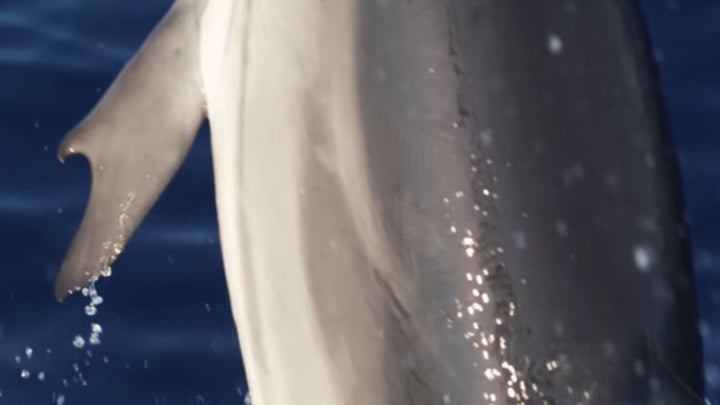While many dolphins look alike, one particular specimen is sticking out like a sore thumb.
That’s what scientists at the Pelagos Cetacean Research Institute in Greece thought after spotting a dolphin with oddly deformed flippers that resemble human thumbs. According to LiveScience, the dolphin was observed in the Gulf of Corinth over the summer — twice.
“It was the very first time we saw this surprising flipper morphology in 30 years of surveys in the open sea and also in studies while monitoring all the stranded dolphins along the coasts of Greece,” Alexandros Frantzis, president of the institute, told the outlet Monday.
Frantzis added the dolphin was “swimming, leaping” and “playing” normally despite the “thumbs” and had no trouble keeping up with its pod. He believes the fins’ shape “does not look like illness” but stems from “rare and ‘irregular’ genes” as a result of inbreeding.
The 1,300 striped dolphins in the gulf are reportedly isolated from their Mediterranean peers and thus have limited options for breeding. According to the Marine Mammal Protected Areas Task Force, it’s the highest permanent striped dolphin species in the Mediterranean.
LiveScience noted that cetaceans, or marine mammals such as whales, dolphins and porpoises, naturally have phalanges. These finger bones are typically concealed by the tissue of their flippers, however, and not entirely missing — as seen in the Greek specimen.

“With a first rapid glance I thought it was injured,” Frantzis told HuffPost. “I immediately started shouting the news for the entire crew to focus on this dolphin and try not loosing it from our view. The dolphin went away from the bow, but we succeeded to approach it again and it came to bow-ride.”
Striped dolphins are some of the most abundant cetaceans in the world, according to the National Oceanic and Atmospheric Administration. They’re usually found in pods of 25 to 100 and have been observed jumping more than 20 feet above the surface of the water.
Their flippers are typically intact, however, unless mangled by predators or affected by disease.
“My surprise was huge when I realized then that both pectoral fins were not ‘normal,’” Frantzis told HuffPost. “I started spreading the news and effort went on for half an hour, because now we had to record this unique case photographically.”
“We got some first pictures of the flippers, which was great, but I was not totally satisfied,” he continued. “Fortunately, a few days later we met again the same school of dolphins and the same dolphin!”
The institute first reported its findings on YouTube in October. Fortunately for boaters around the world, these did not include any thumb-wielding orcas — yet.

